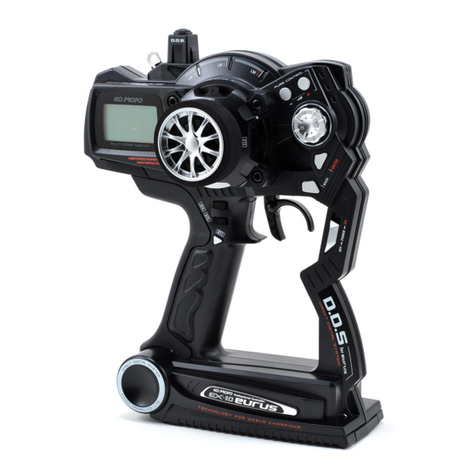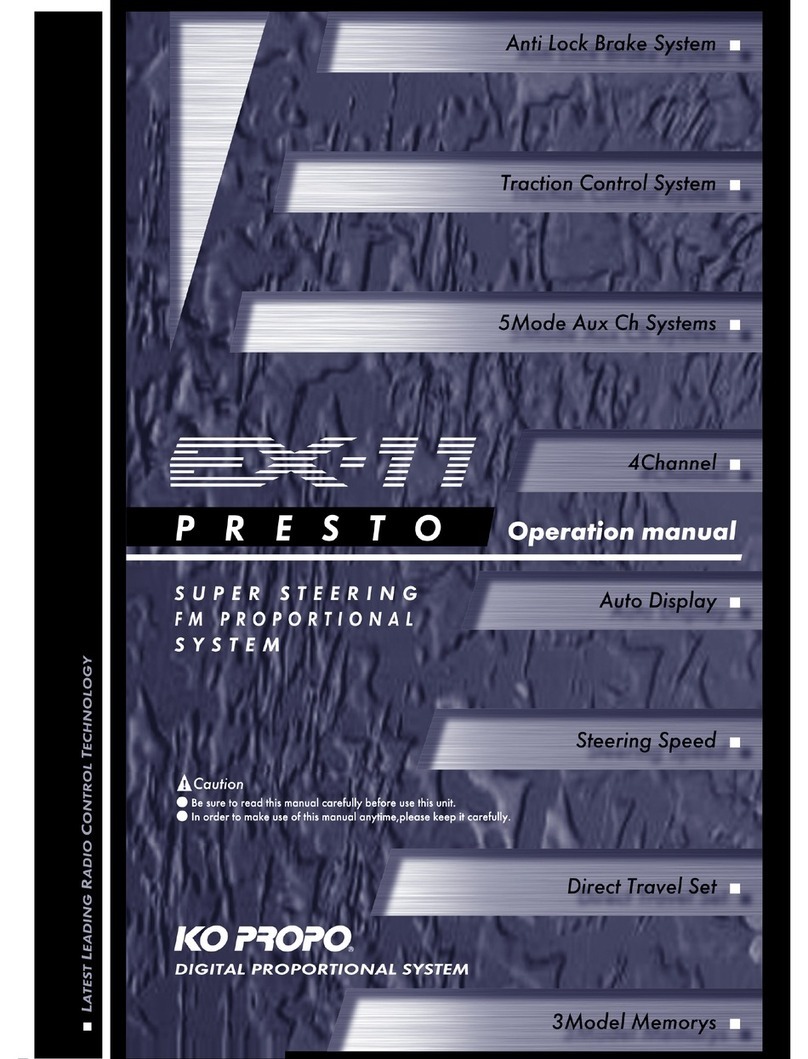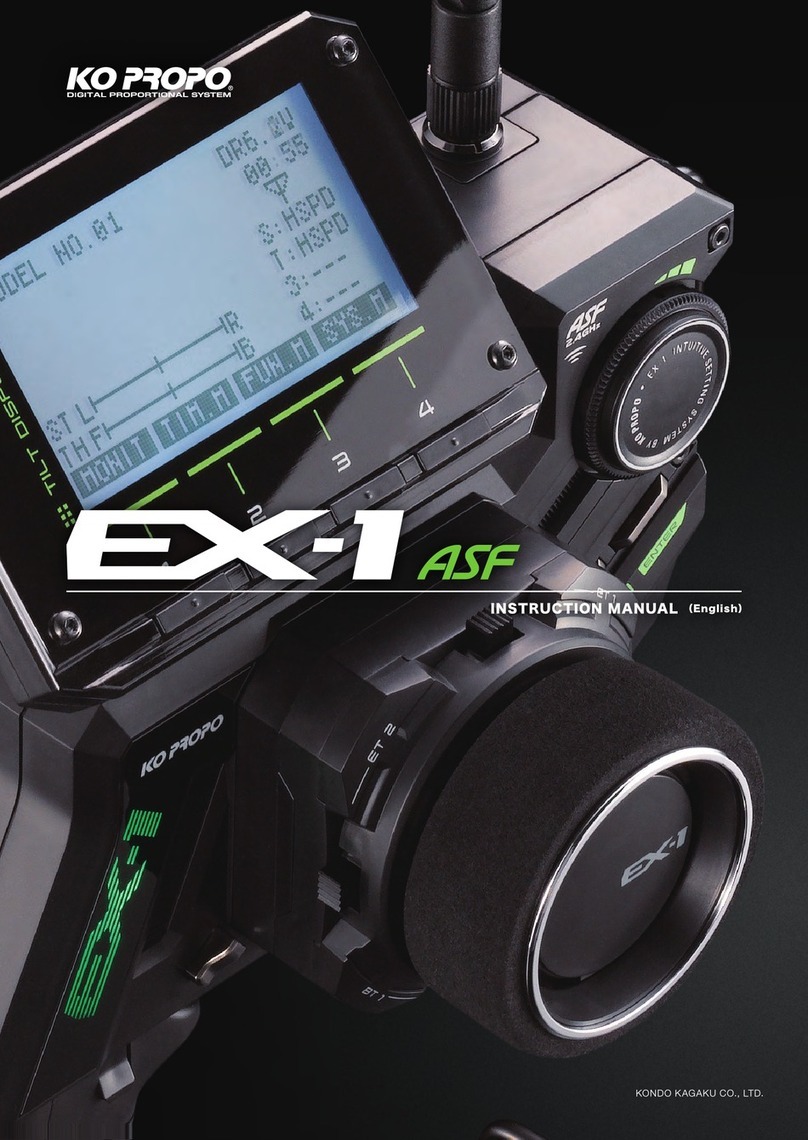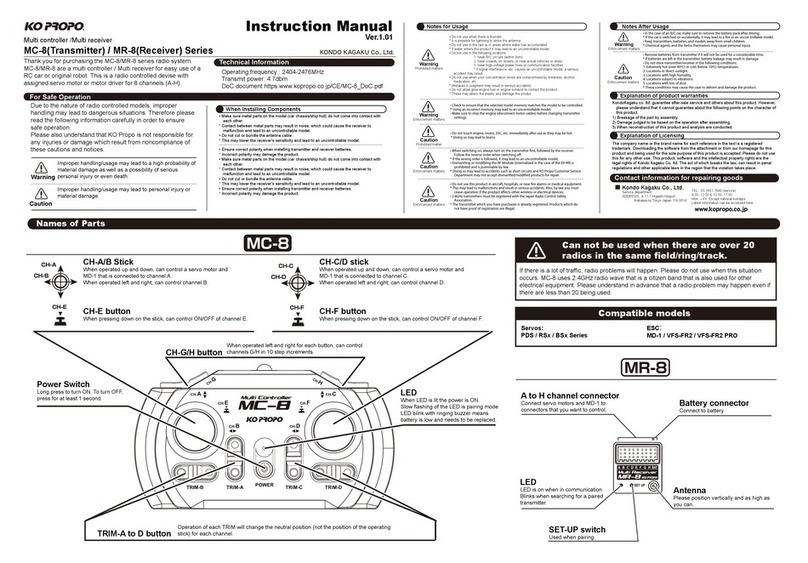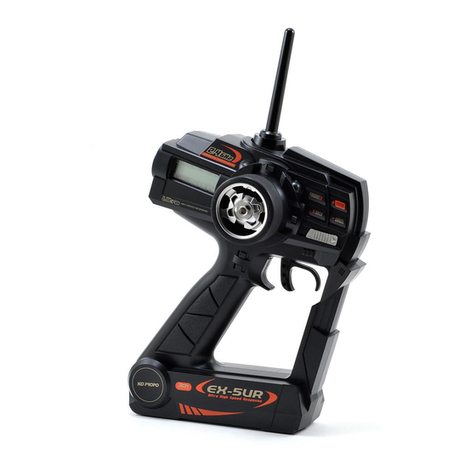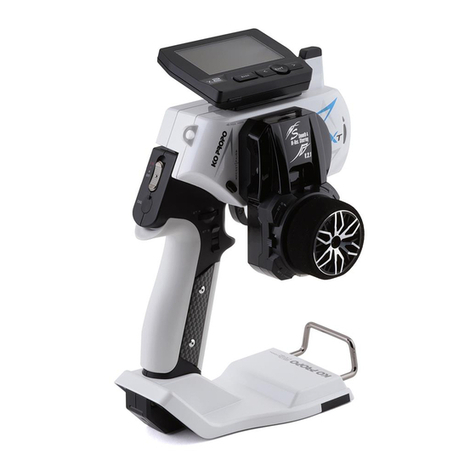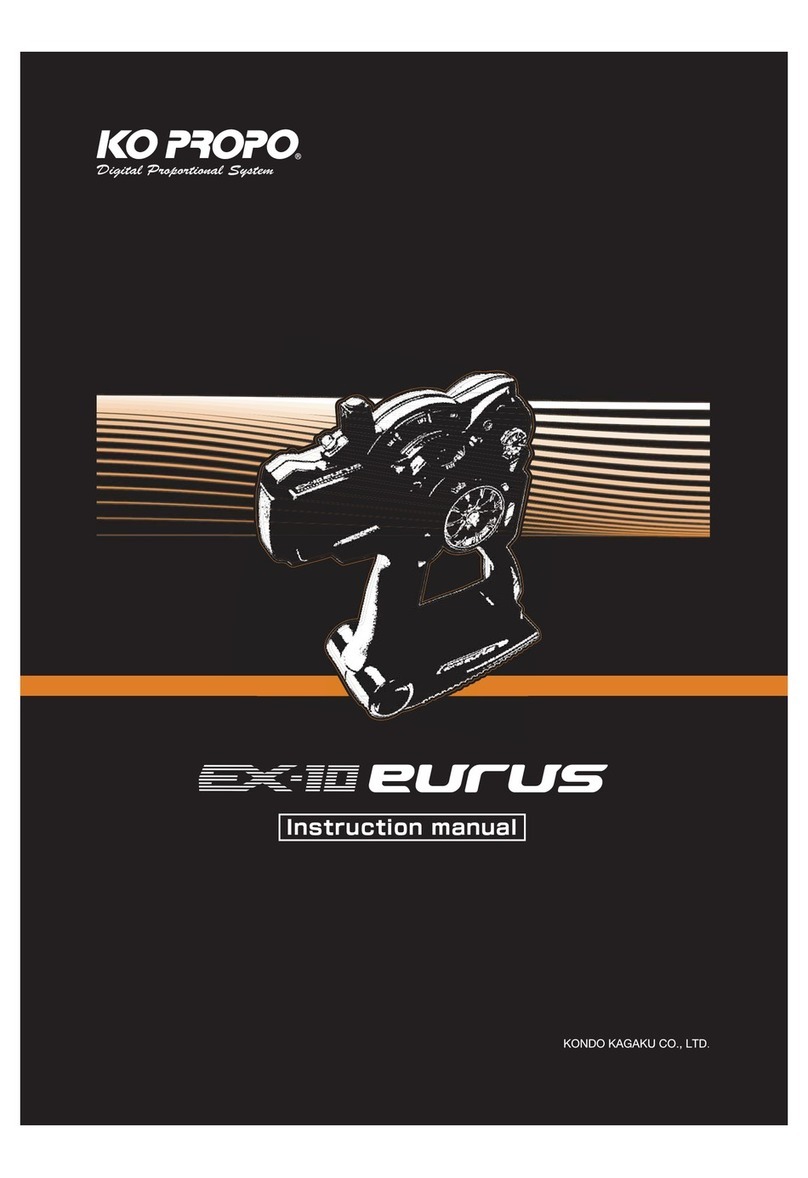
6
Notes on Driving (Sailing)
Do not run the model in the following places.
Near to other radio control car circuits. (within 3km)
Near to people or on the road.
The surface of the water where there are actual sized boats.
Near to electric wires and communication facilities.
*In the case of the model running out of control, it will be very dengerous.
Do not allow any plastic parts to come in contact with fuel and exhaution.
*Doing so causes risk of damage.
Be sure to confirm that the model memory is matched to the models currently
running.
*Not doing so may cause the model to run out of control.
When you make fanctional changes, be sure to stop the engine or disconnect the
motor lead wire.
Attach a band plate when you operate the unit.
*Display your frequency clearly to other people.
Do not touch the engine, motor, ESC where heat is generated.
*May result in burning.
Because the transmitter emits high-frequency energy, do not touch the antenna
while the transmitter is in use.
Do not run the model when you experience difficulties in concentration through
tiredness, alcohol or medication.
*The mis-judgement may result in accidents.
Be sure to extend the aerial of the transmitter to full length.
*The emission of incorrect signals will cause the model to run out of control.
When turning on the power switch, be sure that the frequency band is available.
*The models using the same frequency will run out of control.
Do not use this unit in thunderstorms.
*There is a possibility of lightning striking the antenna.
Do not use the transmitter in the rain or in a location where water might get on it.
*The unit may become wet, which causes loss of control.
Be sure to use genuine KO Propo products e.g. transmitter, receiver, ESC and other
optional parts.
*We cannot assume any responsibility for the use of other companies' products with
this unit.
Be careful not to reverse the polarity of the transmitter and the receiver. Reverse
polarity could damage the unit.
Always turn on the switch on the transmitter first, followed by the receiver. When
turning off the switch, always turn off the receiver first, followed by the transmitter.
*If you don't follow the correct order, the receiver may get interference and run out
of control.
Notes Before Installation
Warning
Caution
Caution
Warning!
Warning!
Warning!
Warning!
Warning!
Warning!
Warning!
Warning!
Warning!
Caution!
Caution!
Caution!
Caution!
Caution!
Caution!
For the safe Usage of this






